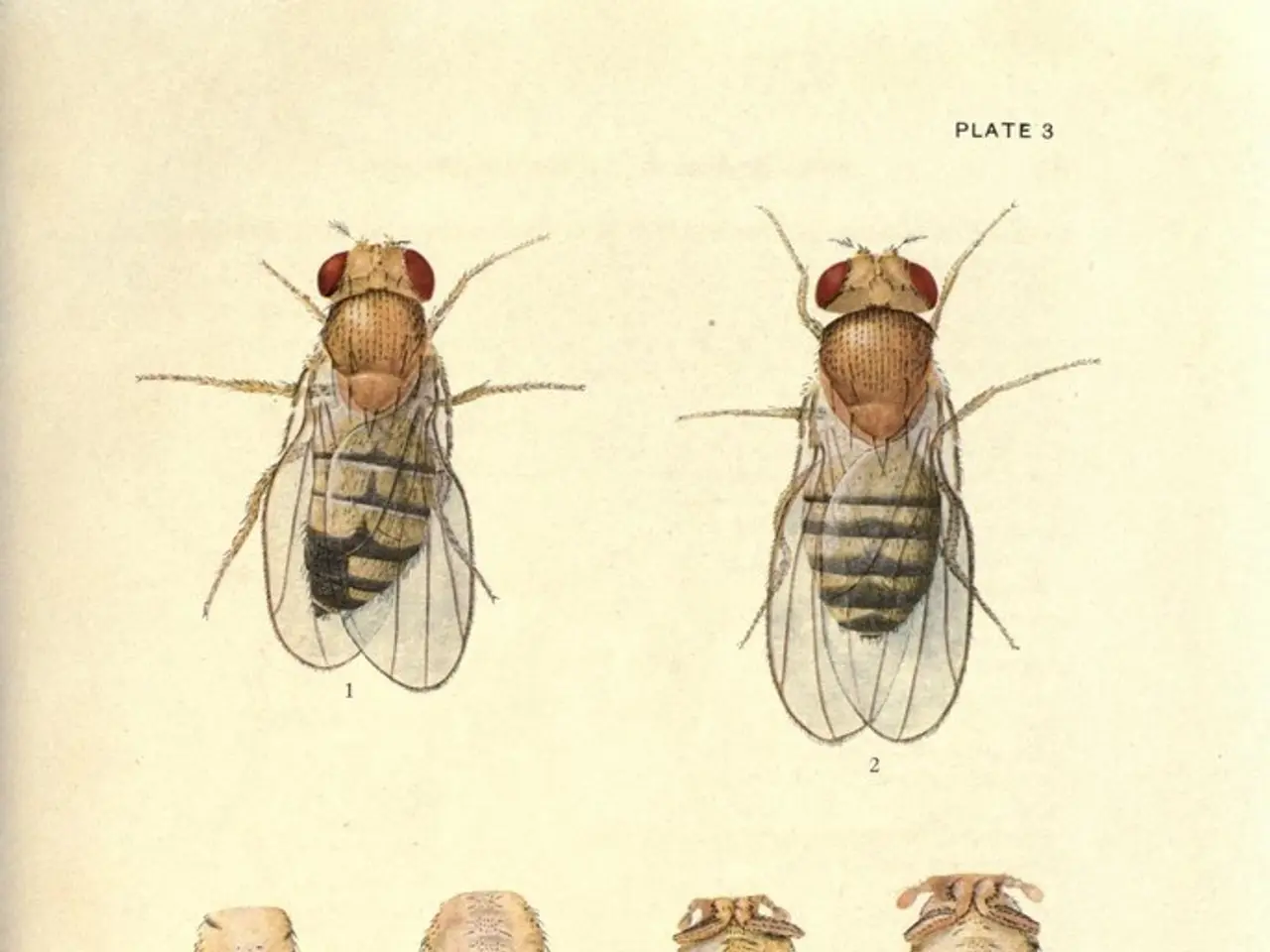Identifying and Managing Typical Hibiscus Pests: A Comprehensive Guide on Common Insect Infestations
Hibiscus plants, with their vibrant flowers and large leaves, are a popular choice for gardens worldwide. However, these plants can fall victim to various pests, causing damage and affecting their overall health and appearance. In this article, we will explore common hibiscus pests, their identification signs, and effective control methods.
Identification of Common Hibiscus Pests:
- Aphids: Small, soft-bodied insects often clustered on new growth or undersides of leaves; produce sticky honeydew leading to sooty mold. Leaves may curl or yellow.
- Spider mites: Tiny, often hard to see directly; cause yellow stippling/bronzing on leaves and fine webbing underneath leaves.
- Japanese beetles: Metallic green-blue beetles that skeletonize leaves, leaving a lacy appearance.
- Ants: Often farm aphids for honeydew; presence signals potential aphid infestation.
- Sawflies: Larvae resemble caterpillars and feed on leaves, causing holes or defoliation.
- Whiteflies: Small white moth-like insects that fly up when disturbed; cause leaf yellowing and sticky residue.
- Mealybugs: White, cottony masses on stems, leaves, or roots; suck plant sap causing yellowing and stunted growth.
- Thrips: Tiny slender insects that cause silvering, stippling, or distorted growth of leaves and flowers.
- Scale insects: Small, immobile, shell-like bumps on stems or leaves that suck sap and weaken the plant.
- Twig pruner larvae: Caterpillars that tunnel inside twigs causing dieback.
- Hibiscus plant bugs: Feed on buds and leaves causing distorted or scarred plant tissue.
Effective Control Methods:
- Biological Controls:
- Attract beneficial insects like ladybugs and lacewings to prey on aphids, whiteflies, and mealybugs.
- Encourage natural predators such as predatory mites for spider mites.
- Cultural Controls:
- Regularly spray plants with a strong stream of water to physically dislodge aphids, spider mites, and whiteflies.
- Remove and destroy heavily infested leaves or branches to reduce pest populations.
- Maintain plant vigor with balanced fertilization and proper watering to prevent stress that attracts pests.
- Avoid excessive use of nitrogen fertilizers that encourage soft tender growth preferred by pests.
- Chemical Controls:
- Apply insecticidal soaps or neem oil sprays targeting soft-bodied insects such as aphids, mealybugs, whiteflies, and spider mites. Neem oil also acts as a repellent and disrupts pest life cycles.
- Use horticultural oils to smother scale insects.
- For severe infestations, consider selective insecticides labeled for hibiscus pests, following integrated pest management principles to minimize harm to beneficial insects.
- Always follow label instructions to avoid phytotoxicity and resistance buildup.
Utilizing an integrated pest management (IPM) approach combining these strategies reduces pest problems sustainably and minimizes environmental impact. Regular monitoring of hibiscus plants for early pest signs is essential for effective control.
In summary, identification relies on observing specific symptoms and insect types on hibiscus plants, while combining biological predators, cultural care, and targeted chemical treatments ensures effective control of common pests. Spray water and use neem oil or insecticidal soap are widely recommended first steps. For more persistent pests, such as whiteflies, removing and destroying infected plants or foliage may be necessary. Diversity among garden beds helps attract beneficial insects and serves as an invaluable resource to pollinators.
Home-and-garden enthusiasts and lifestyle aficionados looking to maintain good health and aesthetic value of their hibiscus plants should be vigilant for common pests. Identifying these pests, including aphids, spider mites, Japanese beetles, ants, sawflies, whiteflies, mealybugs, thrips, scale insects, twig pruner larvae, and hibiscus plant bugs, can help implement efficient control methods. Regularly spraying the plants with water, introducing beneficial insects, maintaining plant vigor through proper fertilization and watering, avoiding excessive nitrogen fertilization, and using organic solutions like neem oil or insecticidal soap are some effective strategies for managing pests, promoting healthy hibiscus gardens.




